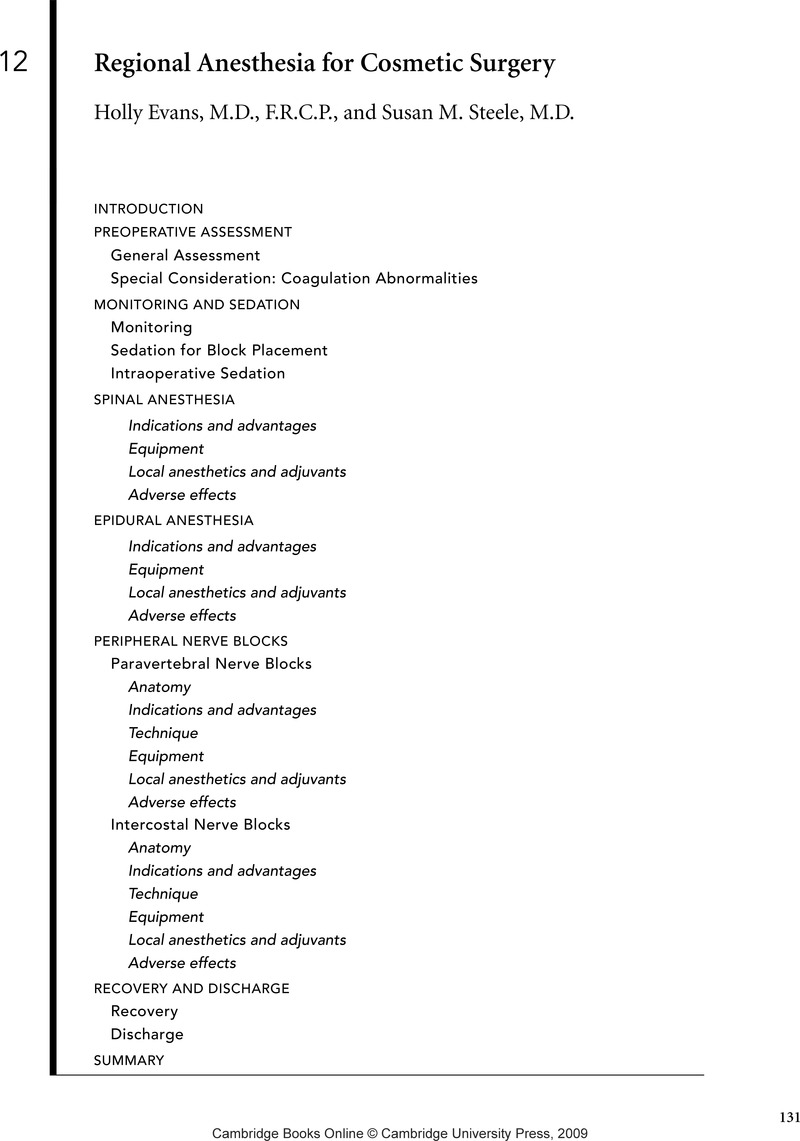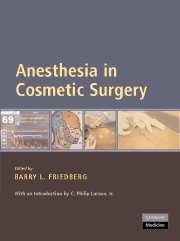Book contents
- Frontmatter
- Contents
- Foreword
- Acknowledgments
- Introduction
- Preface
- List of Contributors
- PART I MINIMALLY INVASIVE ANESTHESIA (MIA)Ⓡ FOR MINIMALLY INVASIVE SURGERY
- PART II ALTERNATIVE ANESTHESIA APPROACHES IN COSMETIC SURGERY
- 11 Intravenous Anesthesia for Cosmetic Surgery
- 12 Regional Anesthesia for Cosmetic Surgery
- 13 General Inhalation Anesthesia for Cosmetic Surgery
- PART III OTHER CONSIDERATIONS FOR ANESTHESIA IN COSMETIC SURGERY
- APPENDIX A A Guide to Perioperative Nutrition
- APPENDIX B Reflections on Thirty Years as an Expert Witness
- Index
- References
12 - Regional Anesthesia for Cosmetic Surgery
from PART II - ALTERNATIVE ANESTHESIA APPROACHES IN COSMETIC SURGERY
Published online by Cambridge University Press: 22 August 2009
- Frontmatter
- Contents
- Foreword
- Acknowledgments
- Introduction
- Preface
- List of Contributors
- PART I MINIMALLY INVASIVE ANESTHESIA (MIA)Ⓡ FOR MINIMALLY INVASIVE SURGERY
- PART II ALTERNATIVE ANESTHESIA APPROACHES IN COSMETIC SURGERY
- 11 Intravenous Anesthesia for Cosmetic Surgery
- 12 Regional Anesthesia for Cosmetic Surgery
- 13 General Inhalation Anesthesia for Cosmetic Surgery
- PART III OTHER CONSIDERATIONS FOR ANESTHESIA IN COSMETIC SURGERY
- APPENDIX A A Guide to Perioperative Nutrition
- APPENDIX B Reflections on Thirty Years as an Expert Witness
- Index
- References
Summary

- Type
- Chapter
- Information
- Anesthesia in Cosmetic Surgery , pp. 131 - 154Publisher: Cambridge University PressPrint publication year: 2007



